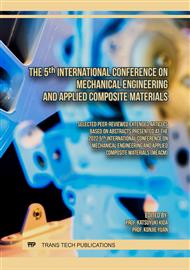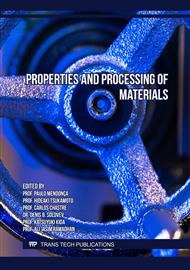p.61
p.67
p.73
p.79
p.85
p.91
p.97
p.105
p.111
Forming Parameters and Optimization of A5052 in SPIF Process
Abstract:
Forming a metallic sheet along with the consideration of computer simulation and experiment had benefited the milling industry for a long time. The ideal forming, without an error, is a concerning topic. So, the computer simulation had the advantage then direct forming. To observe the results before doing the real experiments simulation comes handy. Which helped to set the parameters for the milling process for the single point incremental forming (SPIF) process. For milling, a CAD design was converted into a 3D model. For this, a conical shape of 3D modeling was made in fusion 360. After onwards, it was simulated for finding the maximum depth for the cracking point. Next for the experimental part, the maximum forming depth was considered, and used lubricant grease for reducing friction. While forming with the grease, the impact of parameters was also changed. Throughout the process, an optimization approach was set to reduce the cracking areas for the G-code. Along with the lubricant use, smooth milling finished surface was observed. To reducing the depth forming errors, an optimization approach was introduced in this research.
Info:
Periodical:
Pages:
85-89
Citation:
Online since:
April 2023
Authors:
Keywords:
Price:
Сopyright:
© 2023 Trans Tech Publications Ltd. All Rights Reserved
Share:
Citation:



